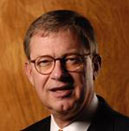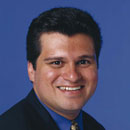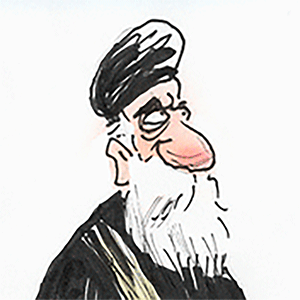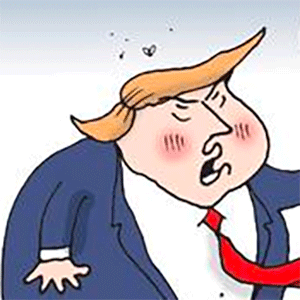Lots of Tumult and Little Bounce This Election Year
What if they held a tumultuous election, with an early one-sided debate, a candidate substitution and third-party withdrawal, and no voters changed their minds? Well, that's not exactly what has happened in America's 60th presidential election year, but it's not so far off, either.
The public has had a chance to watch the 43rd Republican National Convention nominate, for the first time in the party's history, the same presidential candidate for the third time in a row. The only other Republican nominated three times, but not consecutively, was Richard Nixon.
Voters had a chance to watch the 49th Democratic National Convention nominate, for the fourth time in the party's history, the incumbent vice president. The last one to win was Martin Van Buren in 1836.
None of this has caused many voters to change their minds. Looking at the RealClearPolitics average of recent polls, for example, from the day before the Biden-Trump debate to the Tuesday after the two conventions and Robert F. Kennedy Jr.'s withdrawal, the reader sees Vice President Kamala Harris running 3.1 points ahead of President Joe Biden, and former President Donald Trump running 0.3 points ahead of where he was on June 26.
That's a pretty stark contrast with, say, the election cycle of 1988, a time of peace and prosperity when some wondered whether the 77-year-old incumbent president was a step or two slower than he used to be. At one point during that cycle, Democrat Michael Dukakis was leading Vice President George H.W. Bush by 27 points.
On Election Day, Bush won with 53.4%, more than any candidate has won since, and by a popular vote margin of 8 points. Evidently, a fifth to a quarter of voters switched from one candidate to another.
That doesn't happen anymore. National conventions used to produce perceptible bounces for candidates. According to figures compiled by polling analyst Nate Silver and colleague Eli McKown-Dawson, the average post-convention bounce in election years 1976 to 2000, years when one candidate had clinched his party's nomination and conventions became painstakingly scripted commercials, was 7.2 points.
In contrast, the convention bounces in election years 2004 to 2020 have averaged only 1.8 points. That seems to have resulted from increased partisan polarization and reduced convention viewership. With post-convention only starting to come in, McKown-Dawson sees a small bounce, with "the caveat here ... that Harris' bounce might already have happened."
Other caveats are apparent when one compares Trump's numbers this year with those four and eight years ago. Harris' RealClearPolitics lead is 1.5 points -- far behind Biden's 7.1 points at this point in 2020 and former Secretary of State Hillary Clinton's 6.0 points in 2016.
In both those elections, Democrats' numbers in late August polling came close to matching their popular vote percentages in November, while Trump's late August percentages were 2.9 and 2.5 points lower than his final popular vote share. And, of course, Trump won in 2016 and came within 42,918 popular votes in three states of winning in 2020 because so many Democratic popular votes were piled up, without producing additional electoral votes, in carrying West and East Coast states by overwhelming margins.
Silver estimates, plausibly, that there will be less of an Electoral College edge for Trump this year, if only because his increased support from Hispanic and Black people will tend to reduce Democratic margins in those heavily Democratic states. And he points out, reasonably, that while polling may have understated Trump's support in 2020 and 2016, there's no guarantee it will this year.
It remains unclear whether the bulk of journalists will remain uncurious about Harris' positions on issues and will continue to accept complacently and amplify anonymous campaign staffers' tweets that she has abandoned the unpopular positions she took as a 2020 presidential candidate in 2019 -- banning fracking, defunding the police, and abolishing private health insurance.
Fracking is one issue we may hear more about. It had been a 2010s and 2020s boom industry in western and central Pennsylvania -- Trump country once you get beyond gentrified and college-heavy parts of metro Pittsburgh. Harris carefully avoided mention of "climate change" in her convention speech, talking instead of "clean air," something achieved in 1970s legislation, and she has never been asked to explain whether and why she abandoned her vehement fracking ban.
Furthermore, Harris lacks local advantages -- the Scranton roots Biden boasted of in 2020 and the coattails Gov. Josh Shapiro (D-Pa.) might have provided had she picked him for vice president this year. Current RealClearPolitics polling shows Trump 0.2 points ahead now, while he was trailing Biden by 5.8 points and Clinton by 9.2 points at this point in Aug. 2020 and 2016.
If you add Pennsylvania's 19 electoral votes to the 235 in Trump 2020 states, then add the 16 in Georgia and 11 in Arizona he lost by 0.2 and 0.3 points, you have him with 281, well above the 270 needed to win -- and the 269 that would throw the election into a probably Republican House.
You can concoct similar scenarios for Harris, of course, and currently, Silver gives her a 52.5% chance to win against Trump's 47%. Or, if you want another set of portents, look at this month's Washington state all-party primary, which has been a pretty good predictor of general election results in most years since 1994.
This year, RealClearPolitics' Sean Trende has taken a close look at those results and finds them "predicting Democrats running about two points behind Biden's 2020 vote share" and "a pretty close vote outcome in the House that could go either way." That's the closest to a clear prediction you can get from a man who, back in 2013, predicted the Republican swing among noncollege white people -- or from me. Lots of tumult, little change.
========
Michael Barone is a senior political analyst for the Washington Examiner, resident fellow at the American Enterprise Institute and longtime co-author of The Almanac of American Politics. His new book, "Mental Maps of the Founders: How Geographic Imagination Guided America's Revolutionary Leaders," is now available.
Copyright 2024 U.S. News and World Report. Distibuted by Creators Syndicate Inc.





































Comments